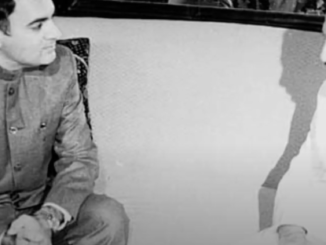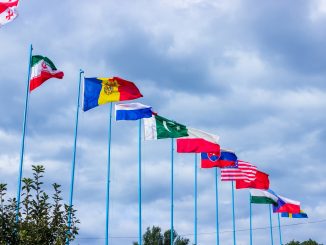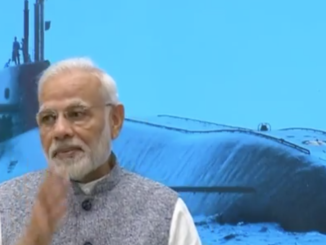Israel, a not signatory to the NPT, has been able to compel the US to assist in bombing the nuclear facilities of the NPT signatory state of Iran and it is quite concerning for the rest of the world. It potentially serves as a precedent for others in future. This event portrays hierarchical observation of the norms of non-proliferation, selectively and unevenly. Such targeted approach actually undermines the non-proliferation regime’s international legitimacy up to the extent that it may incentivize states’ withdrawal from NPT and build their own nuclear capabilities. These states include not only Iran, but also the US’ allies, notably Japan and South Korea, followed by Australia and Saudi Arabia. Moreover, it vindicates the nuclear weapons states outside the NPT and builds a case for their recognition as such in the UNSC.
Although Iran has agreed to and allowed IAEA’s extensive verification regime, yet the case for the recent bombing on Iran has been built on the portrayal of Iran as a high-risk proliferator by the IAEA. This recent Iran-Israel war revealed influence of the great powers on the non-proliferation regime, specifically the IAEA wherein its inspection priorities as well as the reporting tone amid ongoing talks does reflect the political intervention of the influential states, whether they’re NPT signatory or not, evading the regime’ technical criteria. Iran’s treatment has sensitized the world to the disproportionate targeting of certain states, primarily the non-NPT nuclear weapon states and the NPT signatories having nuclear weapons motivations, including Iran at the foremost and the U.S. allies as well, like Japan, South Korea, and even Saudi Arabia.
Striking case is Israel-U.S. nuclear relationship. Israel, a non-signatory to the NPT, maintains deliberate nuclear ambiguity that it neither confirms nor deny its nuclear arsenal. Moreover, despite completely operating outside the NPT and evading the IAEA safeguards, U.S. intervened militarily in support of Israel to bomb Iran’s nuclear sites, designating Israel with the policing role in the Middle Eastern region. Since its inception, Israel’s nuclear weapons programme continues to receive economic and technological support from its nuclear-armed great power allies. However it can be said that recently this support has turned military since if Iran goes nuclear, it would create a nuclear parity in the Middle Eastern security complex. The de-facto recognition of Israel’s opaque nuclear posture discriminately contradicts with the treatment of Iran, and other non-NPT states, even the U.S. allies with nuclearisation ambitions, clearly revealing a pattern of selective enforcement based on strategic alliances.
Previously, the dual-use nature of nuclear technology has been advantageous to the great powers to seek permanent security of their vital interests aligned with critical regional security complexes, thereby leveraging the enforcement of ambiguous nonproliferation regime, for instance providing nuclear technology to strategic partners and allies with minimal safeguards. Prominently, the U.S. ’ ‘Atoms for Peace’ program holds responsibility for nuclear proliferation as it has diplomatically provided cover up to specific states, namely Israel and India, to pursue their nuclear weapons programme in the disguise of peaceful use. Also it played a crucial role in providing them with critical nuclear support, in terms of finance and technology. The on the record conversation between French Foreign Minister Maurice Couve de Murville and the U.S. Secretary of State Christian Herter reveals that Israel developed nuclear weapon with nuclear plant’s financing from the U.S., and technological and raw material assistance from France under the bilateral agreement in return for Plutonium. It won’t be wrong to say that the Eisenhower administration either turned blind eye or gave the overt consent to Israel to go nuclear in order to create a non-Arab nuclear deterrent in the Middle East. For that reason, not all of the revelations of the CIA’s Special National Intelligence Estimate ‘SNIE 100-8-60’ issued in 1960, disclosing Israel’s nuclear weapons programme, has been declassified. In a similar manner, U.S. ’ does hold responsibility, either indirectly, in allowing India to build their nuclear weapon capability Indian nuclear since CIA had intelligence about India’s capability and intent to test nuclear device back in 1960s and again in 1990s.
The way Israel’s Dimona’s perhaps delayed discovery, which builds the case of the U.S. ’ notable nuclear proliferation in the Middle East, is vindicated as U.S. ’ intelligence failure; similarly, it can be said that U.S. ’ pretense of remaining uninformed of India’s nuclear weapon tests of 1974 and 1998 was an implied nod to the creation of the balance of power in the U.S. ’ anticipated Southern Asia. In 1960s and 1970s, India was assisted with nuclear technology by the U.S. itself, namely access to the fuel and the funds for the Tarapur reactor, however under the cover of peaceful cooperation and this ultimately led to India’s 1974 nuclear test. In continuity of it, the 2008 India – U.S. Civil Nuclear Agreement, and then India’s Nuclear Suppliers Group (NSG) waiver despite being non-signatory to the NPT appears to be a follow-up of the U.S. ’ organized mechanisms of nuclear proliferation in critical regions of the U.S. ’ interest and significantly violation along with selected implementation the non-proliferation norms. U.S.’ special NSG waiver to India, which is basically tasked by the non-proliferation regime to control the dual-use nuclear technology, highlights politicization of and the loopholes in the international non-proliferation regime.
The NPT, primarily governing the non-proliferation regime, was established with the core objectives of preventing the proliferation of nuclear weapons and thereby, ensure global security. IAEA has also been trusted with technical impartiality while performing its inspection mandate. Technically speaking, the great powers have been the actual proliferators of the nuclear weapons technology, while the burden of proliferation is periodically shifted upon other states having better compliance with nuclear safeguards. It is understandable that overall non-proliferation regime has constraints coming from its dependency on great powers for providing with funds and information based on their intelligence. However, the present state of anarchy in global non-proliferation would only cause global nuclear insecurity. In contrast and notably, credibility of the non-proliferation regime would only ensure global compliance with equal and universal application of the non-proliferation norms with transparency, regardless of structural and specifically regional power dynamics. However, this is not the case. Its implementation has long been shaped by selective observation of the non-proliferation norms by nuclear weapons possessing great powers, now by their regional agent states, driven more by geopolitical strategy rather than consistent adherence to the international law. This selective behavior undermines the regime’s credibility, weakens compliance, and creates distrust among states, particularly those in the Global South.




Be the first to comment